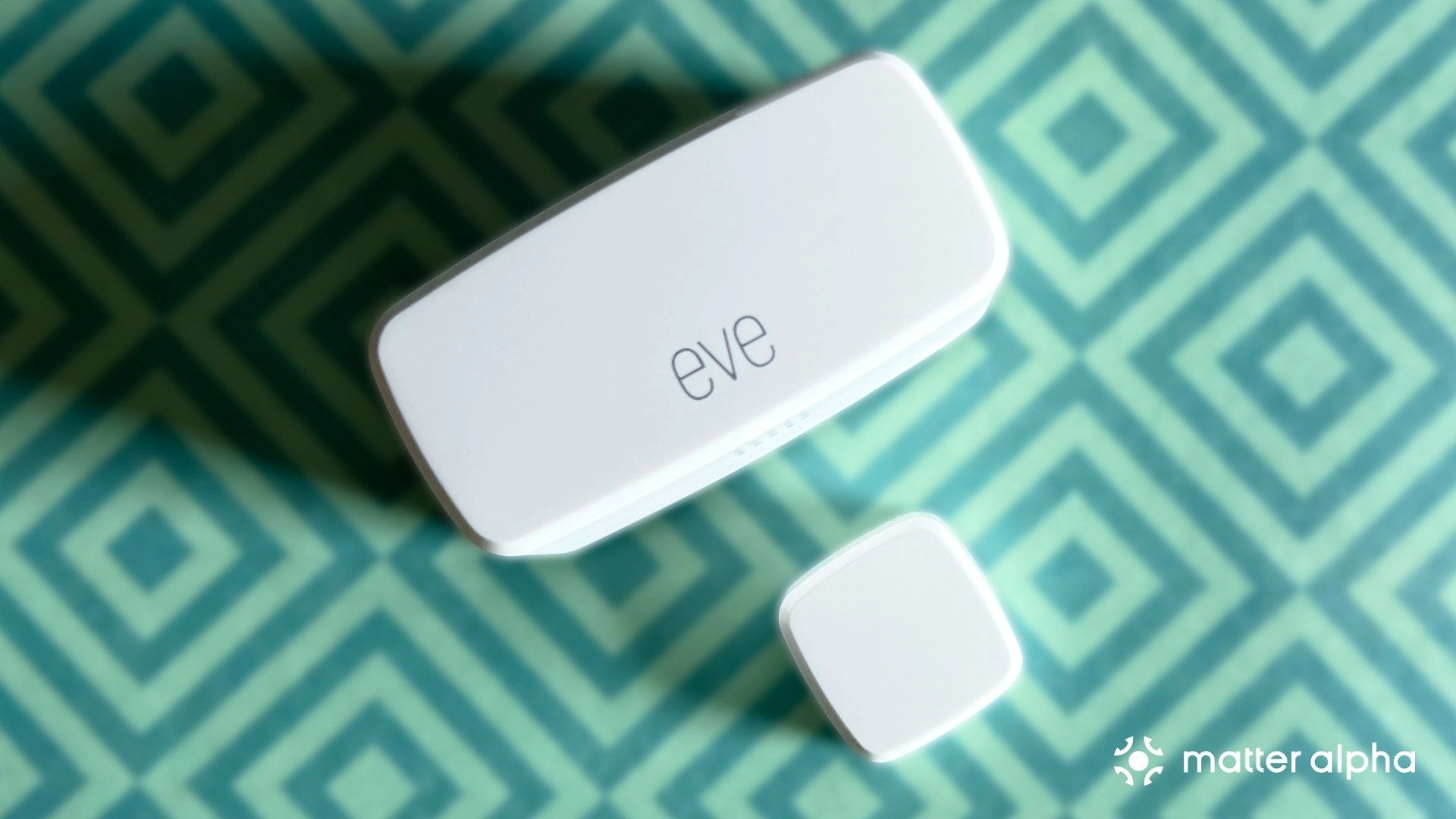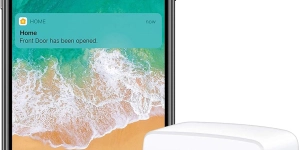Door and window sensors—also known as contact sensors—have played an important role in my smart home over the years. I depend on door and window sensors daily for all sorts of activities: monitoring various entrances, activity logging, and automating lighting and other devices. So I am always on the lookout for the best door and window sensors.
One of my more recent additions—the Eve Door and Window—checked a lot of boxes on my wish list by offering Matter-Over-Thread support without the need for a separate hub or cloud service.
But how does the $39.95 Eve Door and Window actually perform especially when considering the abundance of low-cost alternatives? Let's take an in-depth look.
Eve Door and Window Unboxing and Design
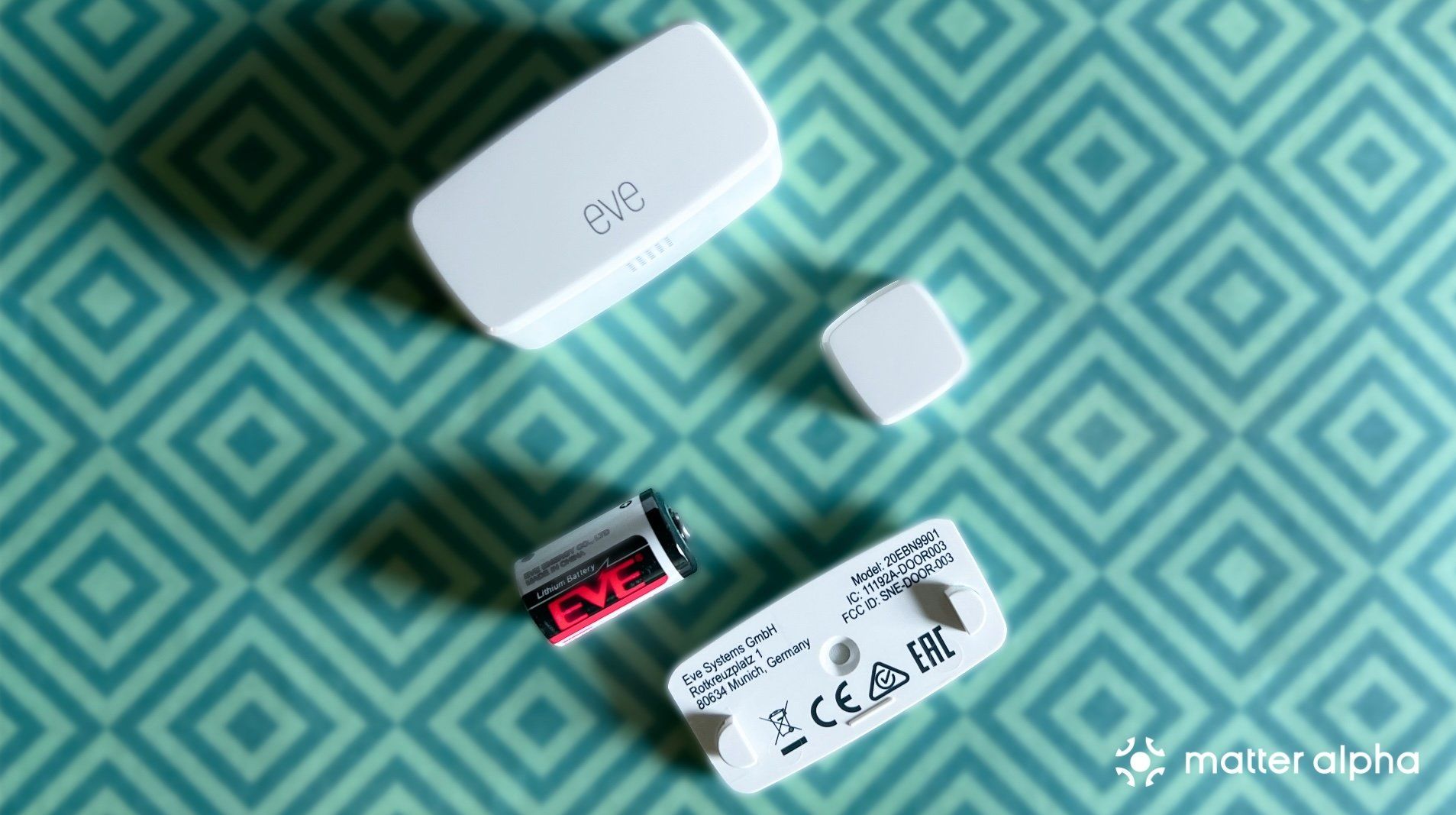
Similar to other Matter-compatible contact sensors—like the Aqara P2—the Eve Door and Window features an all-white two-piece plastic design. The larger of the two measures 2.1 x 1 x 0.9 inches, and acts as the main component (also known as a reed switch) as it houses the sensor's electronics and battery.
The main unit sports an onboard LED in the top right corner of the sensor's face, which is only visible when an open or close event occurs. The sides of the unit feature an on-device Matter pairing code and alignment holes, and around the back is a unique sliding battery cover that allows for replacement without having to remove the entire sensor.
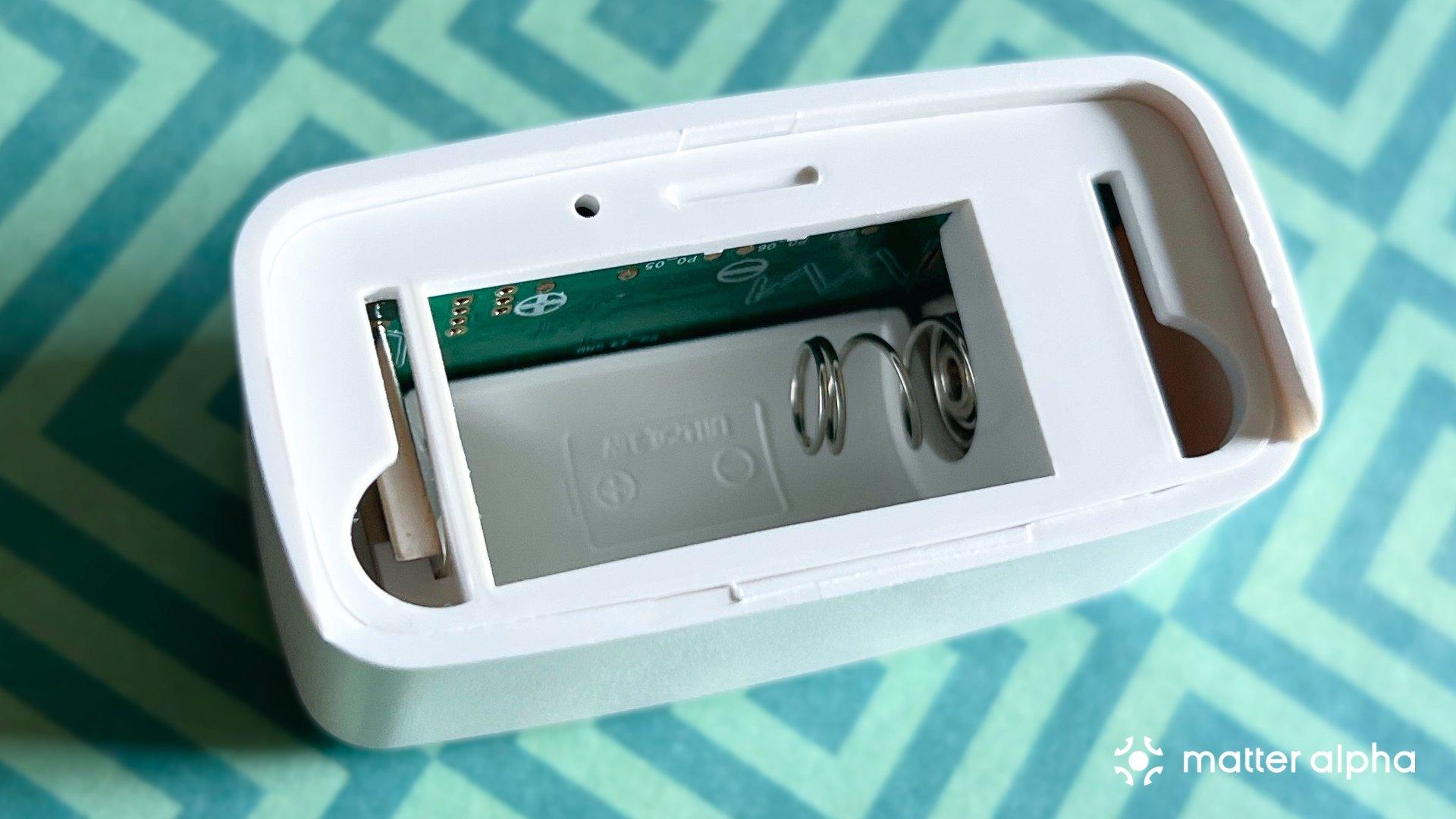
The smaller piece is a simple magnet measuring 0.7 x 0.7 x 0.9 inches, and is what is used to determine when your door or window is opened. Both components attach to flat surfaces via pre-installed adhesive strips which make placement as simple as possible with a peel-and-stick design.
Since the two are drastically different in size, Eve provides a set of spacers in the box that can be used to raise the magnet portion for better alignment. Also included is a quick start guide that provides a brief walkthrough on how to set up the device via Matter, and is incredibly important to keep around as it is home to a backup pairing code.
Eve Door and Window Specs and Connectivity
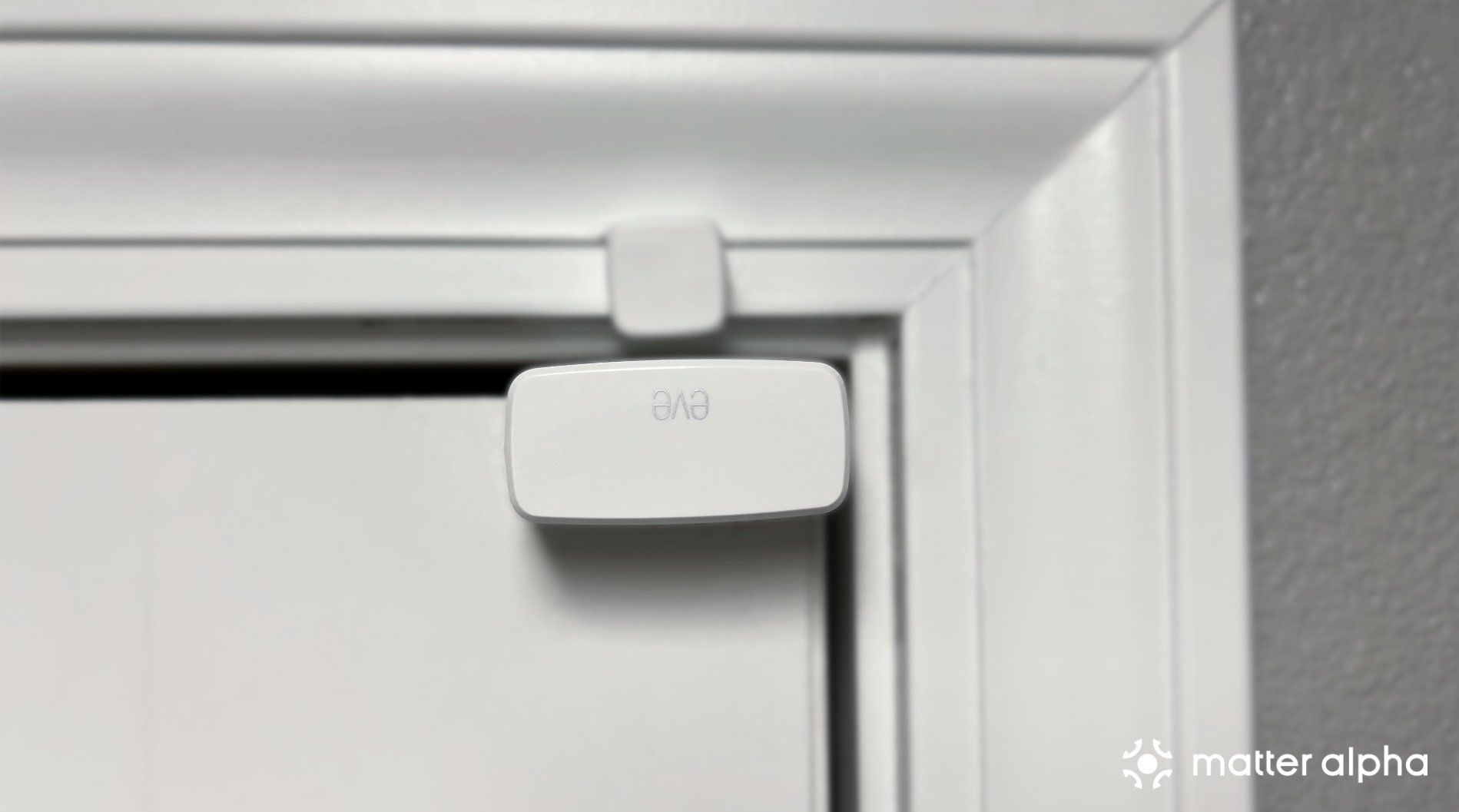
With the simple nature of the Eve Door and Window, there aren't a lot of specs to go over, but we will highlight a few. For starters, Eve's sensor is rated for indoor use only, with operating temperatures ranging from 32-104 degrees Fahrenheit.
As with other Eve products, the company's door and window sensor incorporates both Bluetooth Low Energy and Thread mesh networking technology for its wireless connection to Matter. Although it has both radios onboard, Bluetooth is only used for the initial provisioning and as a fallback, while Thread handles the bulk of the operations after connecting to a Border Router.
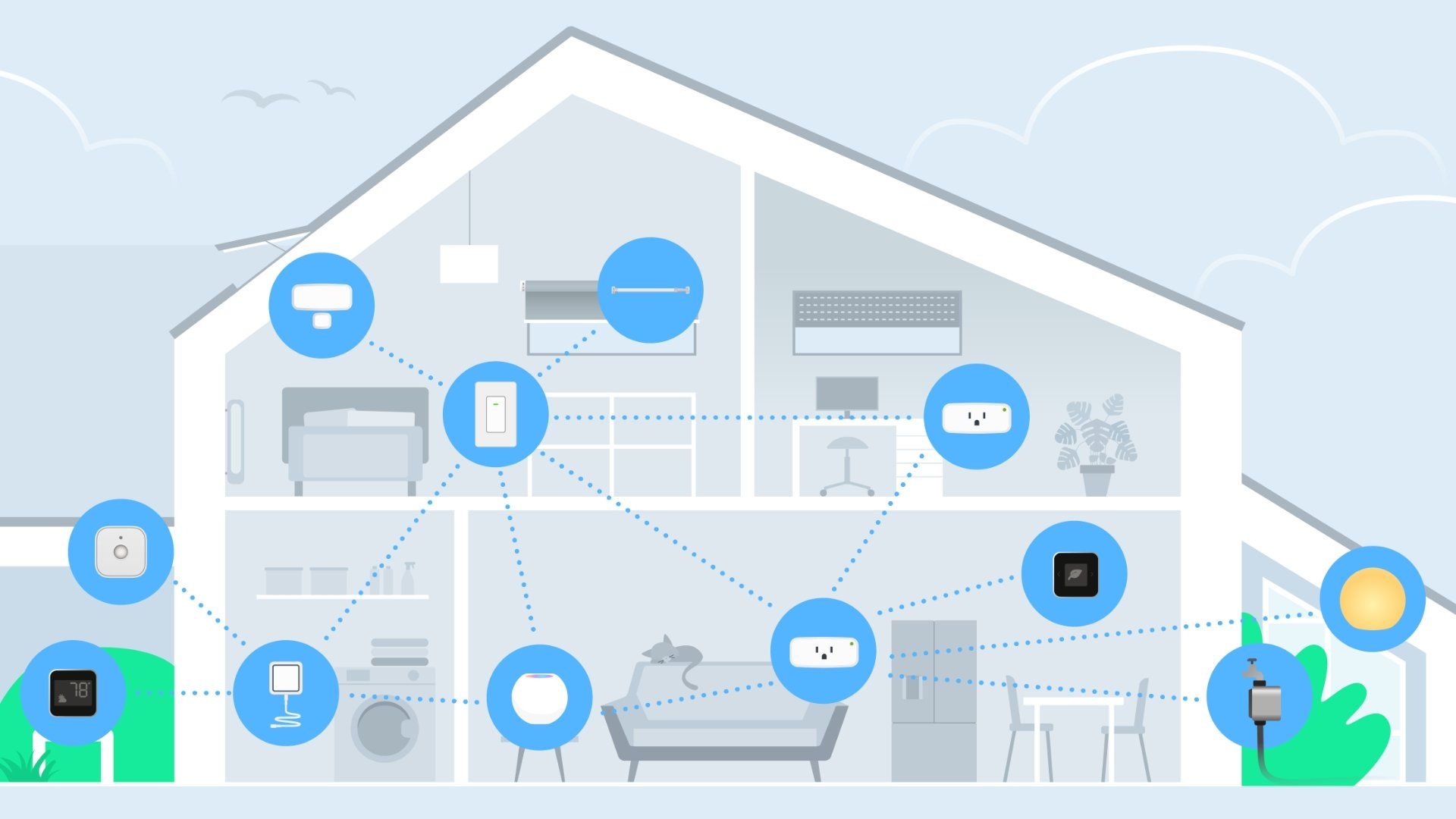
In theory, Thread should allow the Eve Door and Window to offer fast response times similar to Wi-Fi and reliable performance that you often see with ZigBee devices. Thread is also touted as being incredibly power efficient which is ideal in wireless sensors but Eve doesn't provide estimated battery life figures for the Door and Window.
Speaking of the battery, the Eve Door and Window is powered by a single 1/2 AA (ER14250) 3.6-volt cell. The battery size isn't the most common so you'll most likely need to turn to online retailers when it comes time to replace them, but thankfully, Eve does indeed include one to start with in the box.
Eve Door and Window Setup
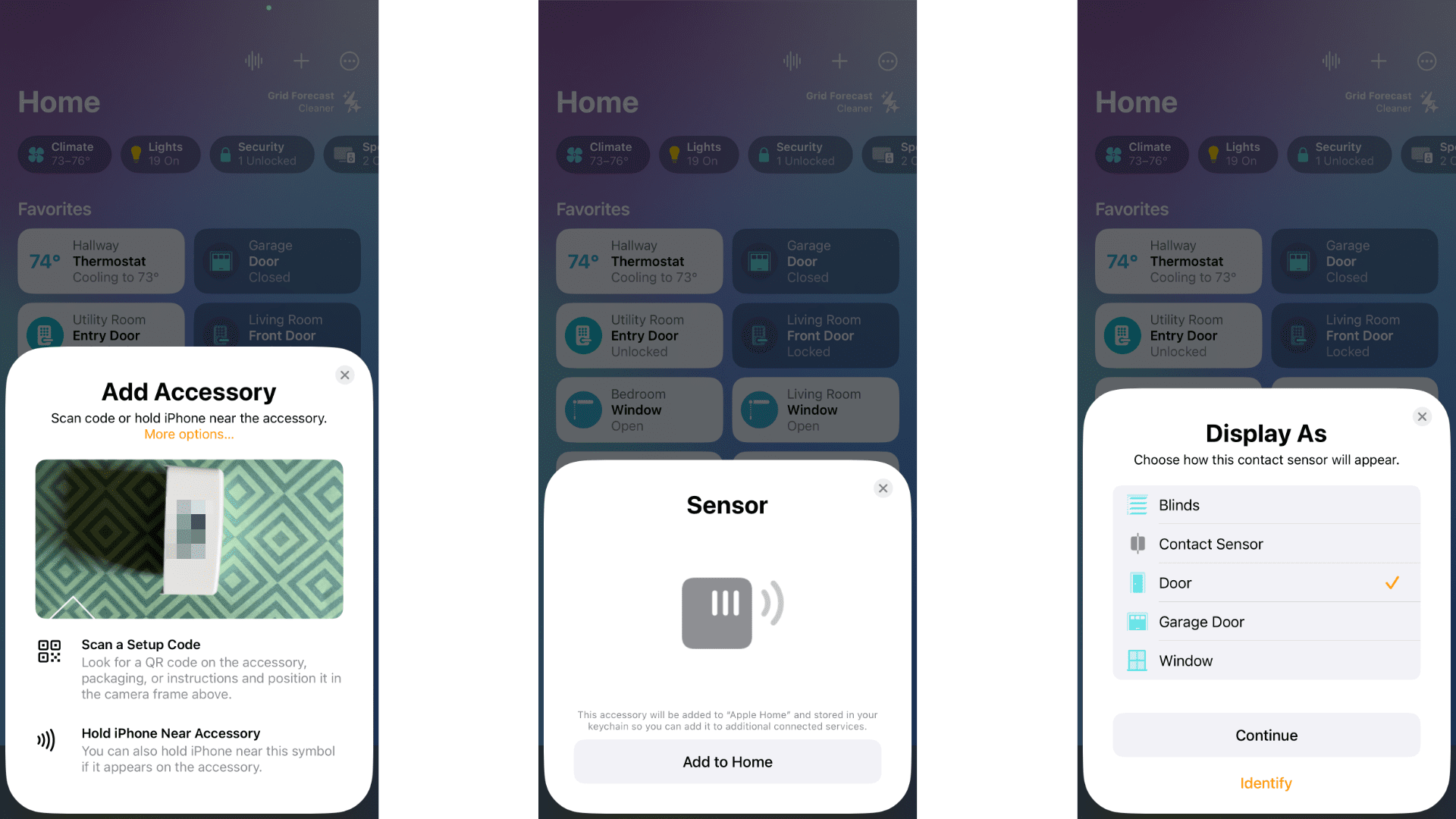
With Thread and Matter baked-in, setting up the Eve Door and Window was effortless. Just like adding other Matter devices to the Apple Home app, the entire setup experience took less than a minute or so and mainly consisted of scanning the pairing code and completing a few customization steps.
By default, the Apple Home app will select a generic Contact Sensor as the device type during setup, but additional options are available. These include: Garage Door, Window, Blinds, and a basic Door—which was perfect for my application.
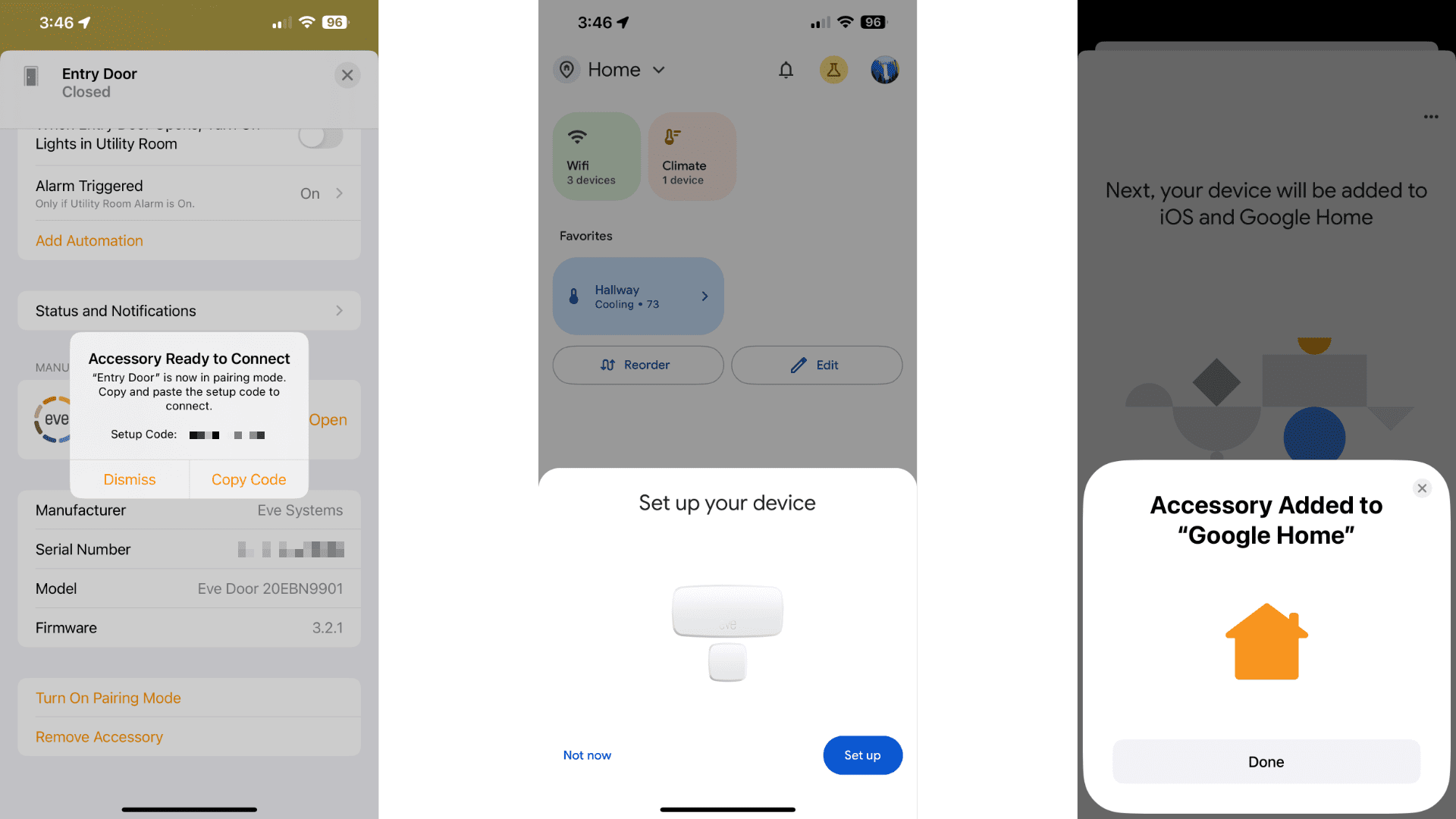
Adding the Eve Door and Window to Google Home as a second Matter platform was also quite easy. Instead of re-using the on-device Matter code, however, I had to generate a new pairing code in Apple Home before moving over to Google Home app.
As expected based on my experiences with the Eve Motion, Google Home picked up the sensor right away, offering to pair the device in a handy pop-up card. After tapping Set up and answering a few organization questions, the sensor was ready to go—again all in a couple of minutes or less.
Eve Door and Window Performance and Automation
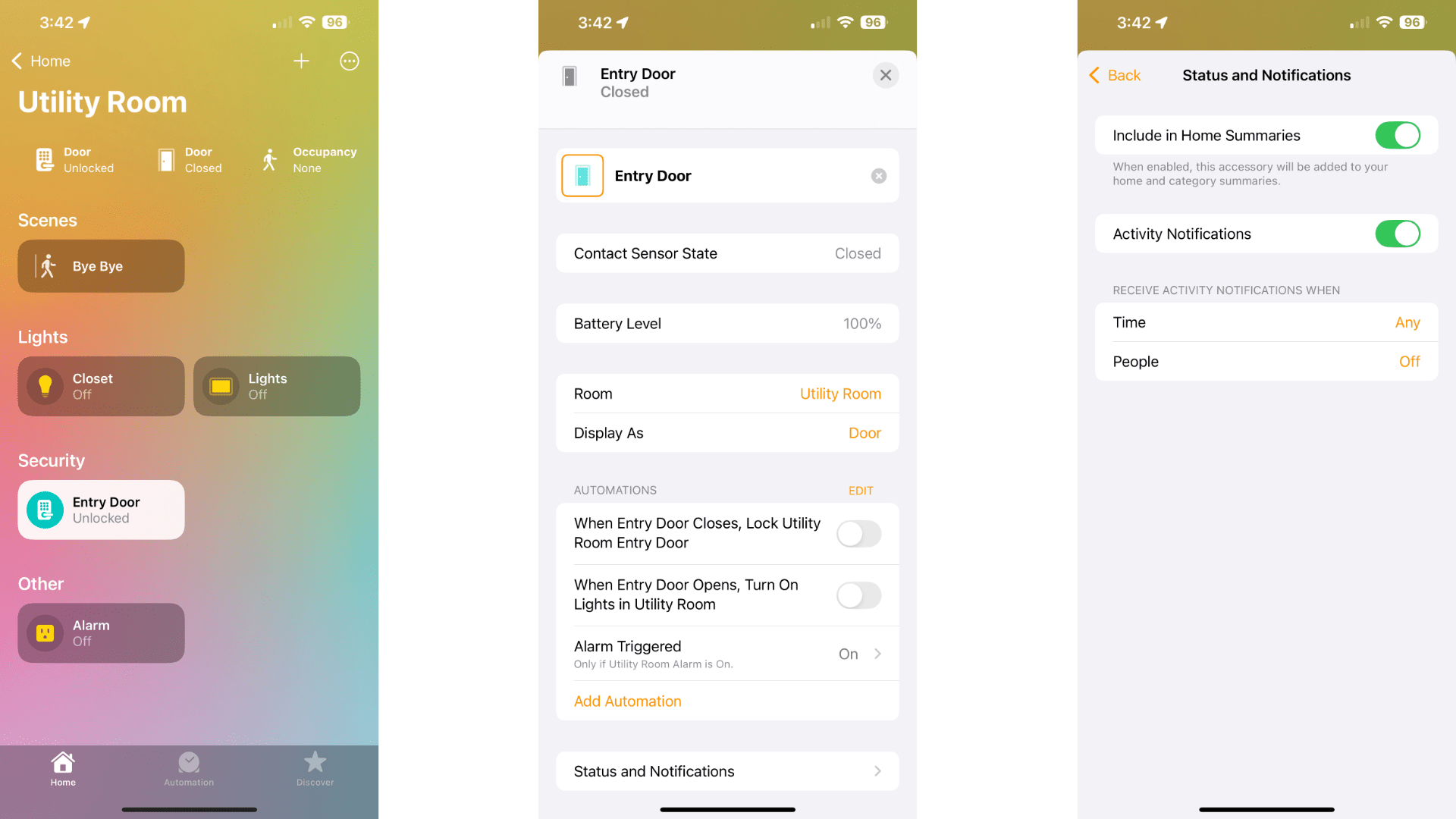
Whether via Apple or Google Home, the Eve Door and Window’s performance was impressive. As previously mentioned, I installed the sensor to monitor the comings and goings of my home on a frequently used door just off my garage—which worked beautifully.
Using Apple Home's built-in Activity Notification capabilities, alerts were delivered to my iPhone and Mac within a second each time the door opened or closed. The sensor's reported state also never became out of sync even when opening and closing the door in rapid succession, and surprisingly, the same went for notifications.
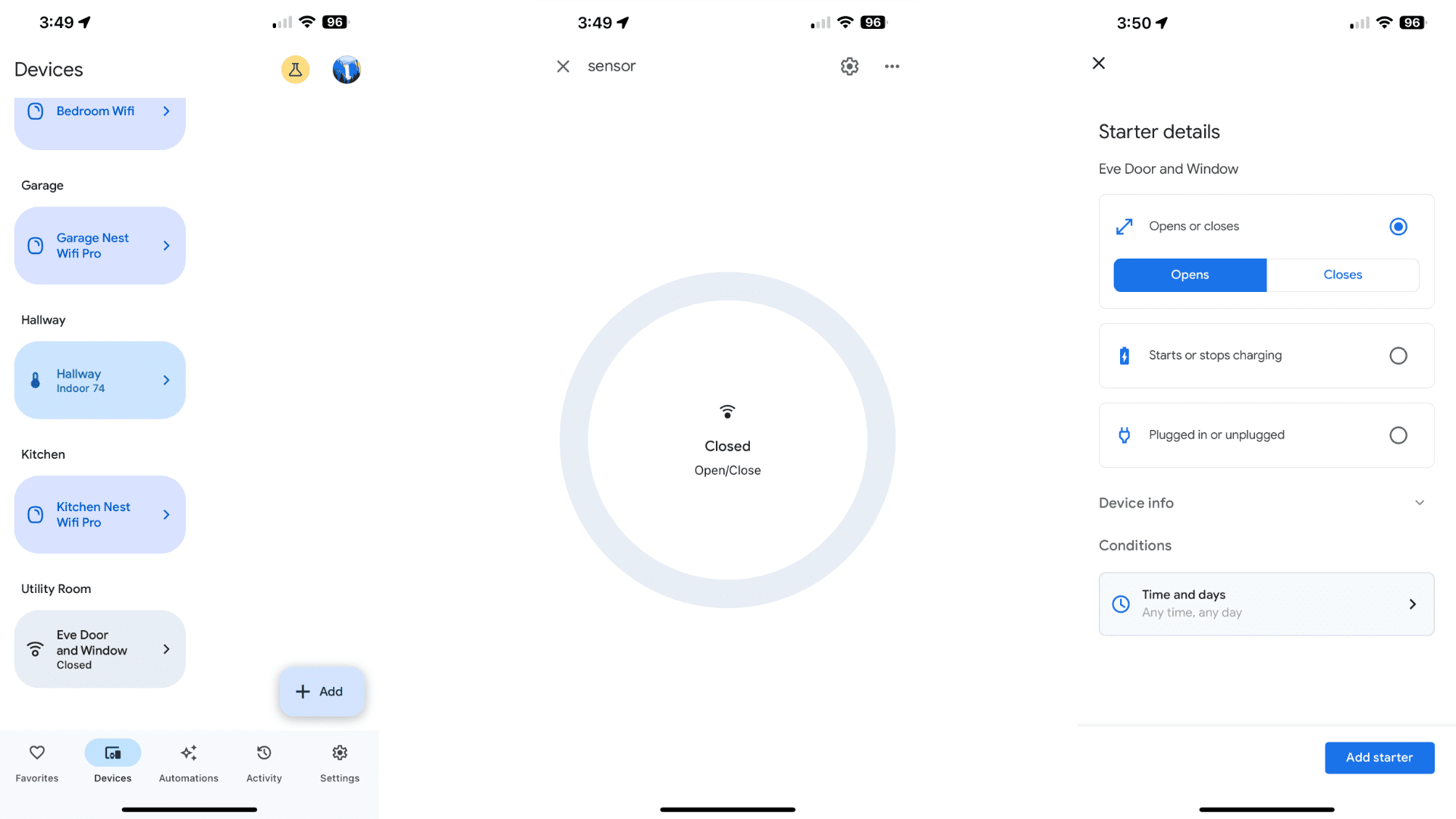
I did notice that the Google Home iOS app was a little slower to update the sensor's status, but it never failed to correct itself after a few moments or after relaunching the app. I haven't tested the sensor strictly in Google Home so it could be a Matter-related issue, but it is something to keep in mind if you're on team Google.
Google Home users will also need to know about one other important thing—the lack of an Eve Android app. While it isn't as big as missing out on energy monitoring as you get with the Eve Energy smart plug, the Eve app on iOS is home to useful features such as detailed activity logging, and conditional automation options.
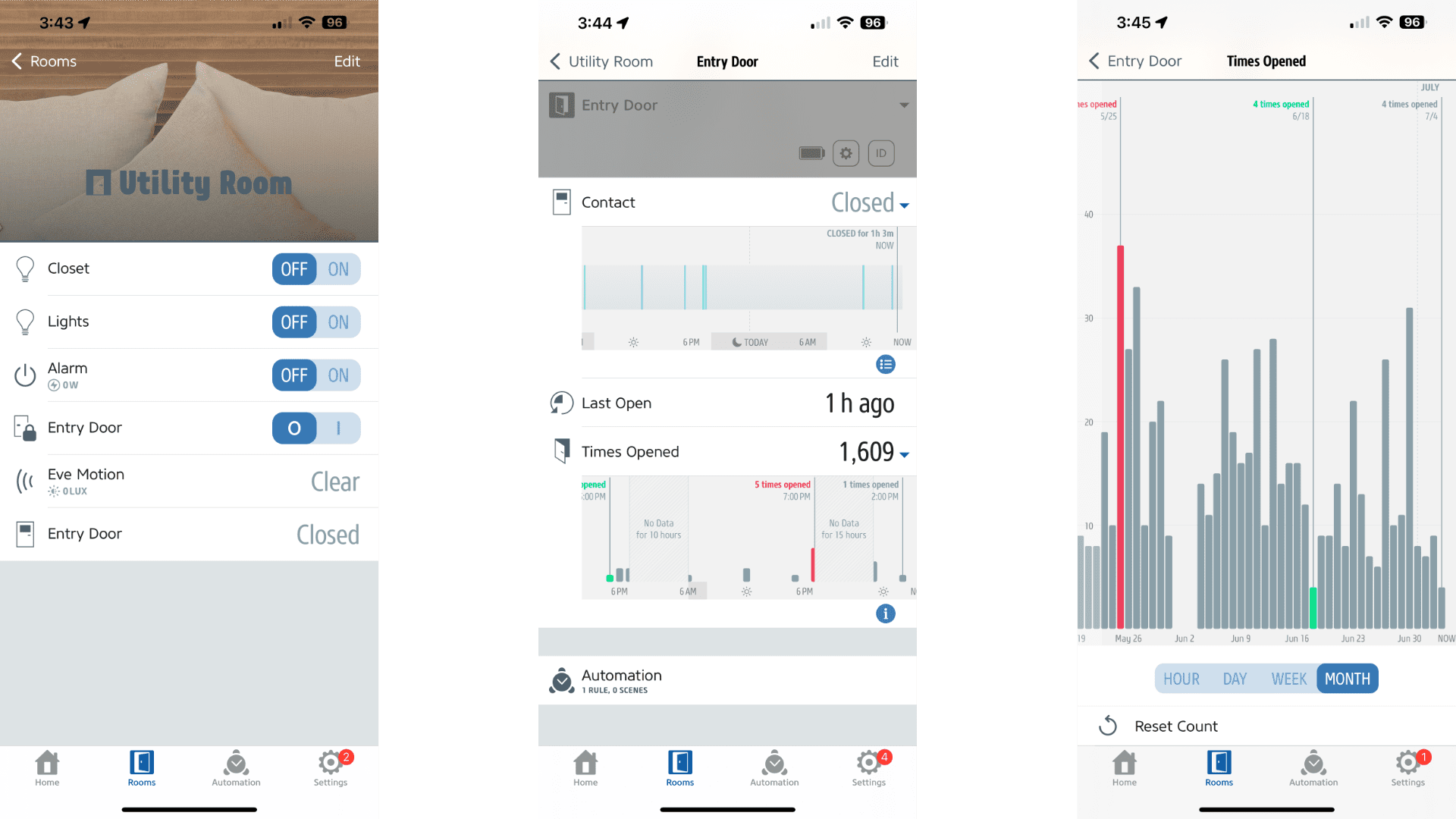
Circling back to performance, the Eve Door and Window’s battery life has also been excellent—at least so far. While it is a little too early to put an exact number on it, I've yet to change the initial battery after hundreds of events and many months of usage.
Finally, the overall reliability of the Eve Door and Window has exceeded my expectations—especially considering that it runs on a battery. The only instances where I have seen the device go offline were when applying updates to my Border Router or after power outages, which is unfortunately a common issue with Thread via Apple Home.
Eve Door and Window: Excellent performance at a premium price
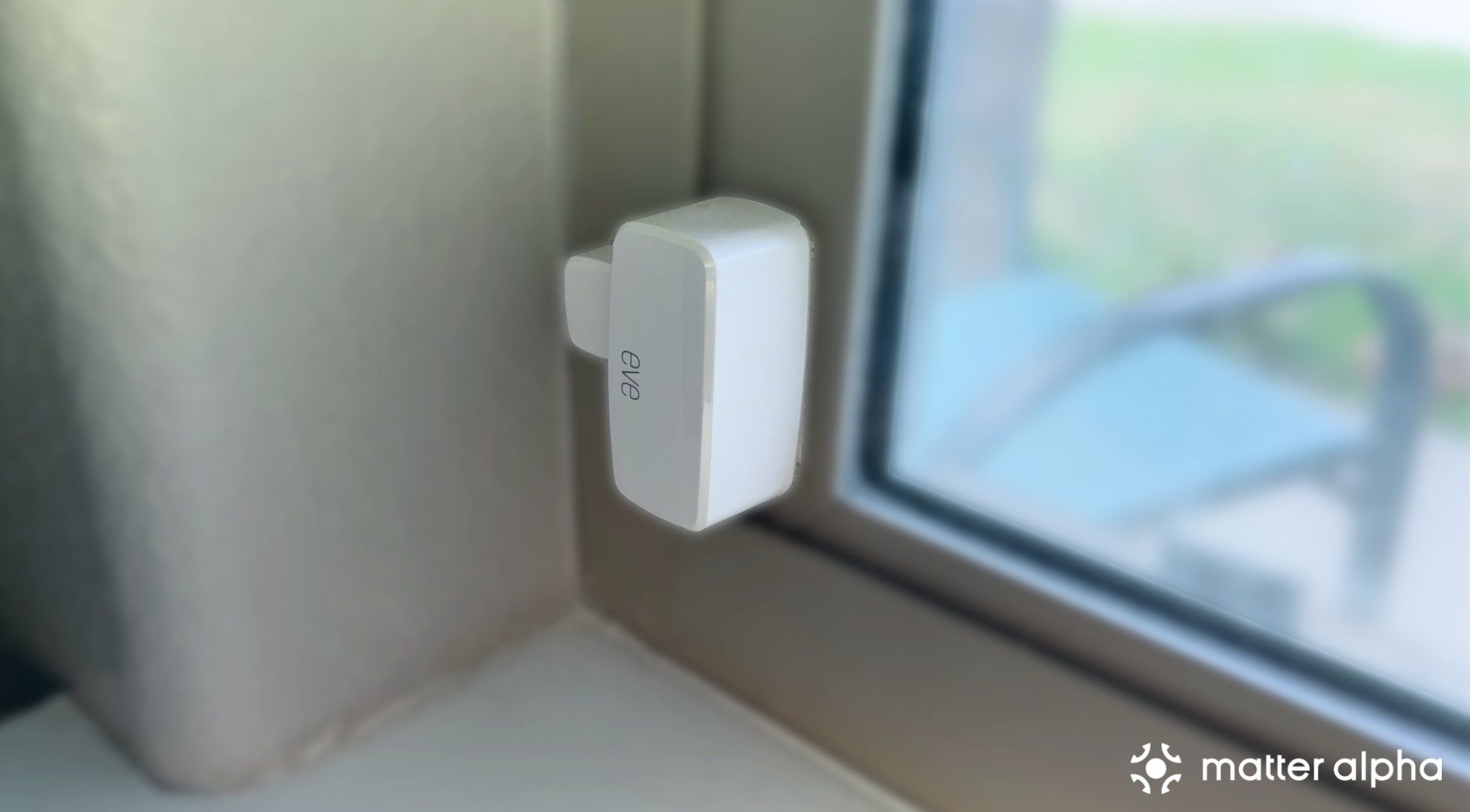
Missing Android app aside, there's definitely a lot to like about the Eve Door and Window. Eve's contact sensor is reliable, performant, and essentially future-proof thanks to having both Thread and Matter onboard.
At $39.95 each though, automating or monitoring multiple doors and windows around your home can quickly add up. So while the Eve Door and Window is certainly among the best in its category, you might be able to find alternatives that offer similar performance at a lower price—if you don't mind a hub.
